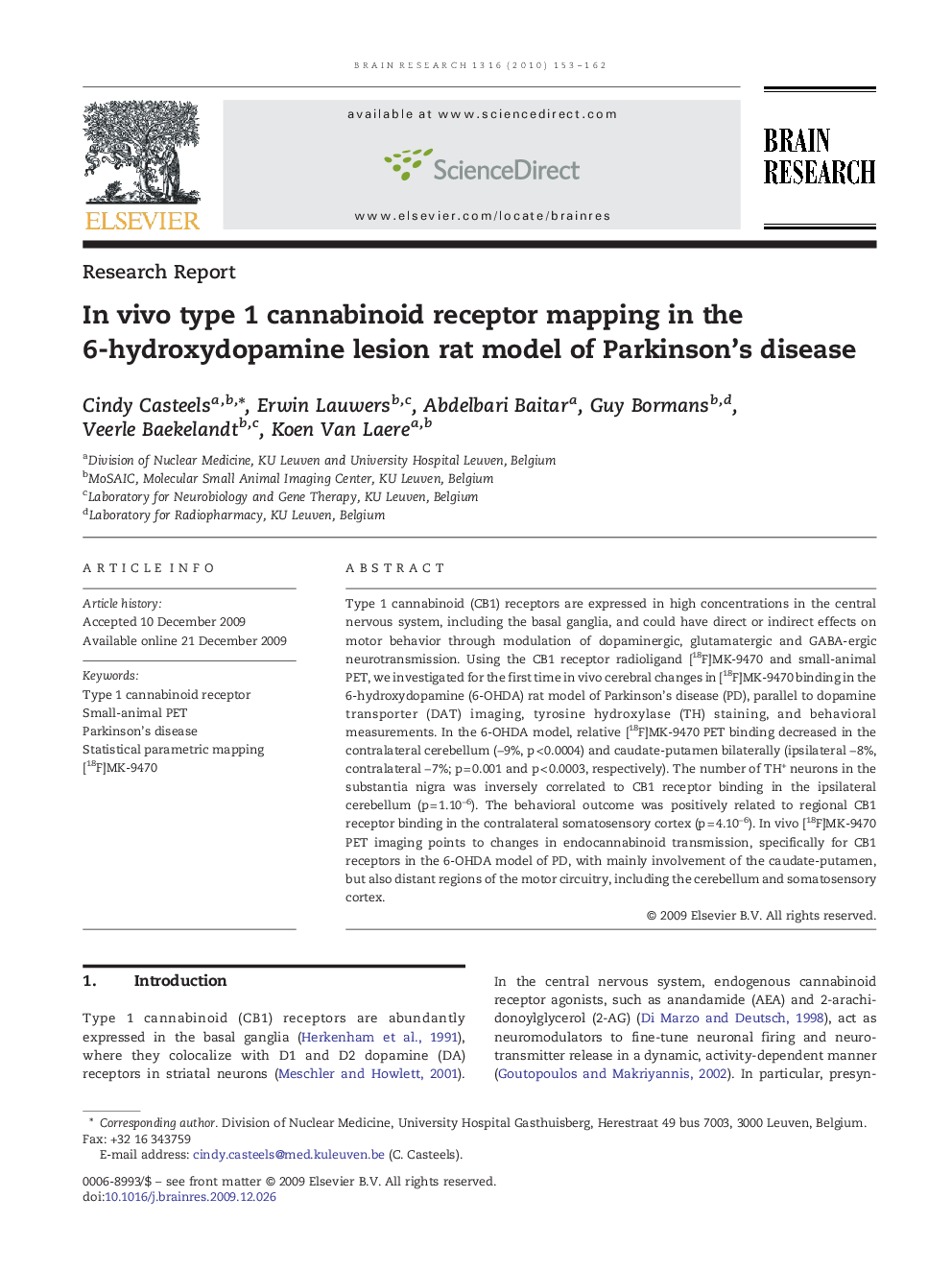| کد مقاله | کد نشریه | سال انتشار | مقاله انگلیسی | نسخه تمام متن |
|---|---|---|---|---|
| 4327339 | 1614123 | 2010 | 10 صفحه PDF | دانلود رایگان |
عنوان انگلیسی مقاله ISI
In vivo type 1 cannabinoid receptor mapping in the 6-hydroxydopamine lesion rat model of Parkinson's disease
دانلود مقاله + سفارش ترجمه
دانلود مقاله ISI انگلیسی
رایگان برای ایرانیان
کلمات کلیدی
موضوعات مرتبط
علوم زیستی و بیوفناوری
علم عصب شناسی
علوم اعصاب (عمومی)
پیش نمایش صفحه اول مقاله

چکیده انگلیسی
Type 1 cannabinoid (CB1) receptors are expressed in high concentrations in the central nervous system, including the basal ganglia, and could have direct or indirect effects on motor behavior through modulation of dopaminergic, glutamatergic and GABA-ergic neurotransmission. Using the CB1 receptor radioligand [18F]MK-9470 and small-animal PET, we investigated for the first time in vivo cerebral changes in [18F]MK-9470 binding in the 6-hydroxydopamine (6-OHDA) rat model of Parkinson's disease (PD), parallel to dopamine transporter (DAT) imaging, tyrosine hydroxylase (TH) staining, and behavioral measurements. In the 6-OHDA model, relative [18F]MK-9470 PET binding decreased in the contralateral cerebellum (â9%, p < 0.0004) and caudate-putamen bilaterally (ipsilateral â8%, contralateral â7%; p = 0.001 and p < 0.0003, respectively). The number of TH+ neurons in the substantia nigra was inversely correlated to CB1 receptor binding in the ipsilateral cerebellum (p = 1.10â6). The behavioral outcome was positively related to regional CB1 receptor binding in the contralateral somatosensory cortex (p = 4.10â6). In vivo [18F]MK-9470 PET imaging points to changes in endocannabinoid transmission, specifically for CB1 receptors in the 6-OHDA model of PD, with mainly involvement of the caudate-putamen, but also distant regions of the motor circuitry, including the cerebellum and somatosensory cortex.
ناشر
Database: Elsevier - ScienceDirect (ساینس دایرکت)
Journal: Brain Research - Volume 1316, 26 February 2010, Pages 153-162
Journal: Brain Research - Volume 1316, 26 February 2010, Pages 153-162
نویسندگان
Cindy Casteels, Erwin Lauwers, Abdelbari Baitar, Guy Bormans, Veerle Baekelandt, Koen Van Laere,